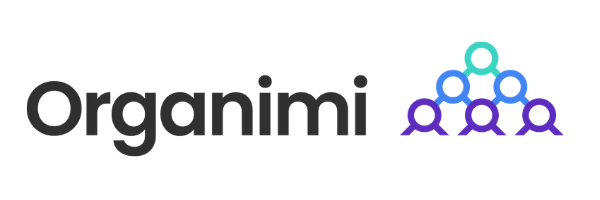What is a Functional Organizational Structure?
Your organization has a lot riding on its structure; it defines the roles and responsibilities of everyone within it and plays a huge part in shaping its culture.
While an organization can choose to adopt any structure, it makes sense to utilize one that aligns with its requirements. Every organizational structure has a different underlying “system”.
In a hierarchical system, for example, the line of authority flows upwards to individual supervisors and managers, ultimately to the CEO while in a matrix system, there are multiple lines of authority that flow to different people.
Today, we’re going to look at the functional organizational structure.
How Does a Functional Organizational Structure Work?
In a functional organizational structure, the organization is divided into smaller groups and divisions based on specialized function areas, such as marketing or finance.
By dividing an organization into a variety of functional structures, greater control can be exercised over operations and how work is performed.
These functional areas operate in their own bubbles and are disconnected from each other. Generally, the line of authority from each function will flow to a senior executive or functional head, such as the VP of marketing, and then to the CEO and the board. A great example of this is Amazon’s corporate structure.
The functional organization structure is ideal for a business that deals primarily with operations, such as e-commerce, logistics, or manufacturing, where specialist employees fill skilled roles.
What are the Advantages of a Functional Organizational Structure?
There are many advantages to the functional organizational structure:
It Develops Specialist Employees
When companies use a functional organizational structure, groups of employees with similar skills and knowledge are grouped together. This enables employees to hone these skills and become specialists and experts in their field, leading to long-term professional development.
The in-depth knowledge held by these employees can also help a company achieve its long-term functional goals.
It Promotes Operational Efficiency
Due to their expertise, workers with a finely tuned set of specialist skills can carry out tasks more quickly, efficiently, and confidently.
The knock-on effect of this is in two parts: i) it will also lend a boost to the achievement of organizational goals and ii) it will keep employees motivated and encourage them to stick around and develop within and move up the company hierarchy.
It Creates a Clear Hierarchy
A functional structure—especially when it is mapped out using org chart software and distributed to your employees—creates clarity within the organization. It presents everyone with their individual place and role in the organization clearly and without ambiguity.
This reduces the number of communication channels, enabling information to flow more quickly and without resistance through the organization.
What are the Disadvantages of a Functional Organizational Structure?
Just as there are several key advantages, there are some disadvantages that need to be considered if you’re considering adopting a functional structure:
Cooperation Can Be Difficult
Although the functional organizational structure is efficient, cooperation and collaboration can sometimes be compromised. This is because functional groups largely work in their own bubbles, meaning that rifts between different groups can develop over time.
When this happens, infighting and a reluctance to cooperate can lead to delays, wasted time, and projects that come off the rails. This can ultimately drive down motivation, production, and efficiency, making it more difficult to reach organizational goals.
Inflexible Management
The difficulties facing communication and cooperation don’t just affect individual teams, they can also work their way to management level.
This is because functional organizations have more rigid and bureaucratic operations, and this can slow down the decision-making process. And because teams exist in these bubbles or “silos”, functional departments and units aren’t accountable to one another, leading to poor horizontal coordination between managers.
3 Examples of Other Organizational Structures
If the functional organizational structure doesn’t sound like it’s right for your organization, you’ve got plenty of other options—you could even invent your own!
Here are three examples of other common organizational structures:
1. Hierarchical Organizational Structure
The pyramid-shaped hierarchical organizational structure is by far the most commonly used one by organizations worldwide. In the hierarchical structure, the chain of command goes from the very top (e.g., CEO) and cascades downwards to the very bottom (e.g., entry-level roles) and each employee has their own manager or supervisor.
The hierarchical structure is popular because it’s the best at defining levels of authority. It also motivates employees with clear career paths and progression opportunities. At the same time, it can slow down innovation and make lower-level employees feel as if they’ve got less of a stake in the company or are less important.
2. Matrix Organizational Structure
A matrix organizational structure is composed of a sort-of grid or matrix pattern, rather than a traditional pyramid-shaped hierarchy.
In a matrix organization, people with similar or complementary skills are pooled together for projects and collaborative work assignments, meaning that more than one manager is reported to for a single project or undertaking.
For example, a new sales project in an organization may overlap with the marketing department. All sales professionals will report to their own manager, with some members of the sales team also reporting to the marketing manager for the duration of the project, and vice-versa.
3. Flat/Horizontal Organizational Structure
A flat (or horizontal) org structure is better for companies where there are very few levels between entry- and staff-level employees and upper management. A classic example would be a start-up organization where upper management is heavily involved in its day-to-day operations.
Many start-ups and new businesses use this structure while they grow, eventually evolving into a more suitable structure as new departments are formed, and more employees are brought on board. Some organizations maintain this structure even while they grow because it encourages more involvement from employees and leads to innovation and a stronger culture.
This is because the flat structure gives employees more autonomy and promotes open communication. At the same time, the flat structure can create confusion since there is often the absence of a clear supervisor and it can be difficult to maintain as the company gets bigger.

